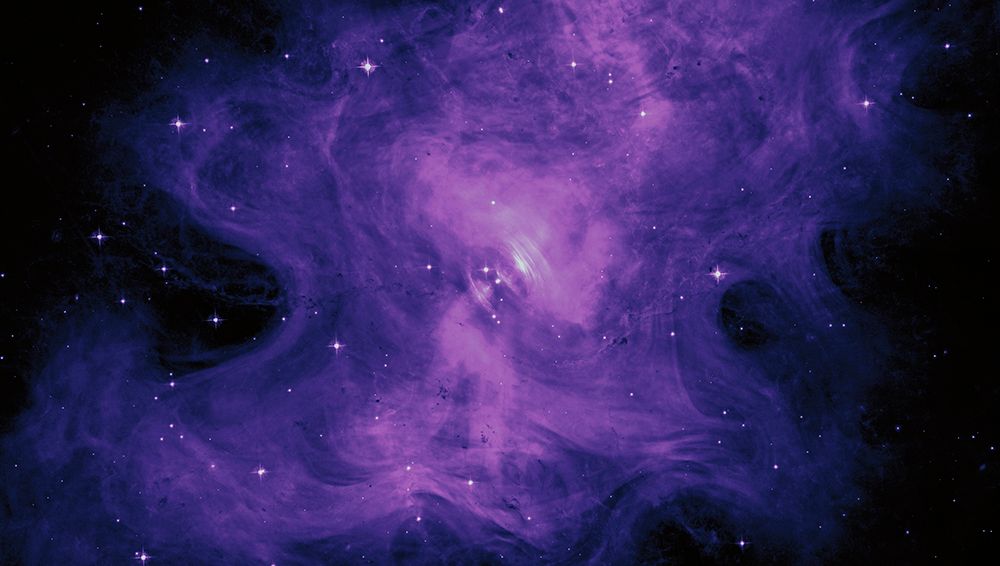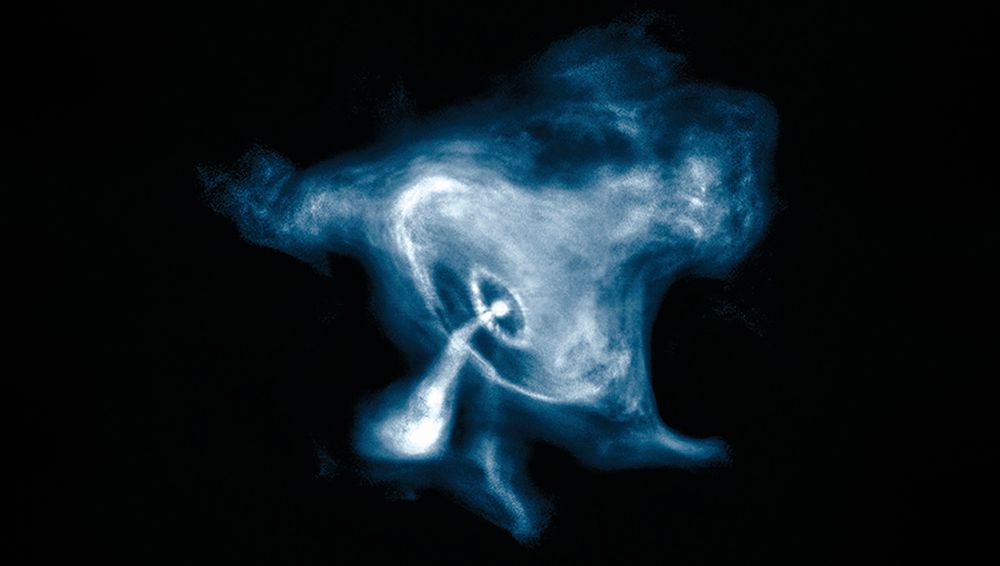
Crab Nebula Sonification
The Crab Nebula has been studied by people since it first appeared in Earth’s sky in 1054 A.D. Modern telescopes have captured its enduring engine powered by a quickly spinning neutron star that formed when a massive star collapsed. The combination of rapid rotation and a strong magnetic field generates jets of matter and anti-matter flowing away from its poles, and winds outward from its equator. For the translation of these data into sound, which also pans left to right, each wavelength of light has been paired with a different family of instruments. X-rays from Chandra (blue and white) are brass, optical light data from Hubble (purple) are strings, and infrared data from Spitzer (pink) can be heard in the woodwinds. In each case, light received towards the top of the image is played as higher pitched notes and brighter light is played louder.
Access more information & file formats on this sonification
The Chandra sonifications were led by the Chandra X-ray Center (CXC), with input from NASA's Universe of Learning. The sustained collaboration was driven by visualization scientist Dr. Kimberly Arcand (CXC), astrophysicist Dr. Matt Russo and musician Andrew Santaguida (both of the SYSTEM Sounds project). For other sonifications, please see their linked pages.
cxcpub@cfa.harvard.edu
617-496-7941
60 Garden Street,
Cambridge, MA 02138 USA
Art Direction/Design: Kristin DiVona
Web Developers: Khajag Mgrdichian
& Kelly T.S. Williamson
Chandra X-ray Center, Operated for NASA by the Smithsonian Astrophysical Observatory. This site was developed with funding from NASA under contract NAS8-03060 | Privacy | Accessibility
Additional support from NASA's Universe of Learning (UoL). UoL materials are based upon work supported by NASA under award number NNX16AC65A to the Space
Telescope Science Institute, working in partnership with Caltech/IPAC, Jet Propulsion Laboratory, and Smithsonian Astrophysical Observatory.




